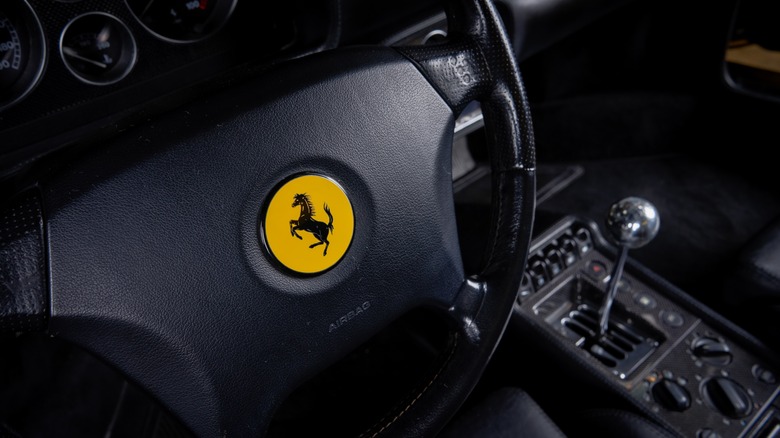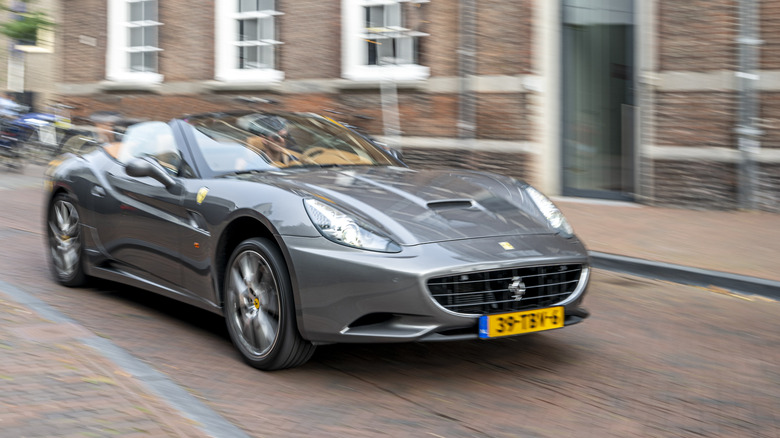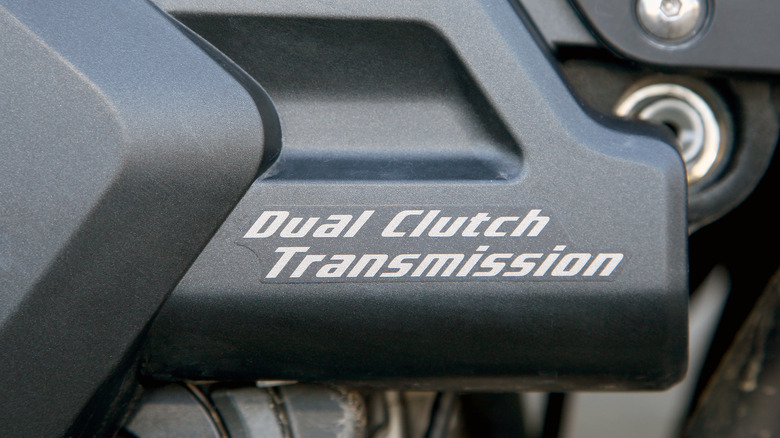The Reason Why Ferrari Stopped Selling Cars With A Manual Transmission
When people think of fast cars, they think of the manual stick shift. Pressing the accelerator down to the floor, shifting gears, and only hitting the brakes when there's a turn to make are the images that flash in people's minds. To most, the manual transmission is synonymous with high-performance cars. Well, Ferrari changed things up over a decade ago, ceasing production of cars with a manual transmission in 2012.
In 2008, the manufacturer introduced the world to the Ferrari California, a model that revived a name not used since the '60s. This California came with a dual-clutch transmission that also offered the ability to use a manual gearbox. This was the last car from the Italian automaker to provide a clutch pedal, opting to focus on its dual-clutch technology that outperforms manual transmissions. Ferrari wasn't the only company to leave the manual transmission in the past, as Lamborghini, Mercedes, and McLaren have done the same. Why the gradual change of heart?
Halting manual transmission production was a financial decision
The most apparent reason behind the decision is money. As much as car enthusiasts say they enjoy the feel and sound of pressing in a clutch to shift gears manually, they don't put their money where their mouth is; demand for cars with a manual transmission has drastically declined over the years. By 2012, three years after the California's release, Ferrari only received between three and five orders for manual gearbox models, according to Ferrari's marketing chief Nicola Boari.
Manufacturing high-performance cars with two separate transmissions that have to undergo rigorous scrutiny before landing on the sales floor puts a needless financial burden on the company. Instead of manufacturing a product in low demand, Ferrari could reallocate those funds toward improving the already superior technology it utilizes in its cars. Ferrari's leading competitor, Porsche, continues producing various cars with a manual gearbox for those who enjoy the heel-toe experience.
The dual-clutch transmission offers better performance
Looking under the hood of a Ferrari might fool a casual observer since a dual-clutch transmission resembles a manual gearbox on the outside. However, it doesn't behave like one. It might not have the same feel as the old-fashioned stick-shift models, but dual-clutch transmissions provide faster acceleration and a higher top-end speed. A dual-clutch transmission uses two gearboxes that switch between the odd and even gears without any loss of torque to the wheels, eliminating the need for a clutch pedal. This gives the driver a more seamless experience behind the wheel, allowing them to focus solely on the road.
At the Paris auto show in 2016, Michael Hugo Leiters, Ferrari's chief technology officer, said, "Ferrari is design, performance, and state-of-the-art technologies. There's no manual transmission that can beat this performance, and therefore, we have decided to stay on the double-clutch gearbox."
Since the dual-clutch transmission is directly attached to the engine via clutches, the driver won't experience any loss of momentum. The following gear the transmission needs to shift to has been pre-selected, allowing it to shift quickly without notice. However, anyone who owns one of the few Ferrari Californias with a clutch pedal is in for a treat. Collectors' attraction for such a rare product has more than doubled its value, with one lucky owner selling theirs at auction for $435,000.


